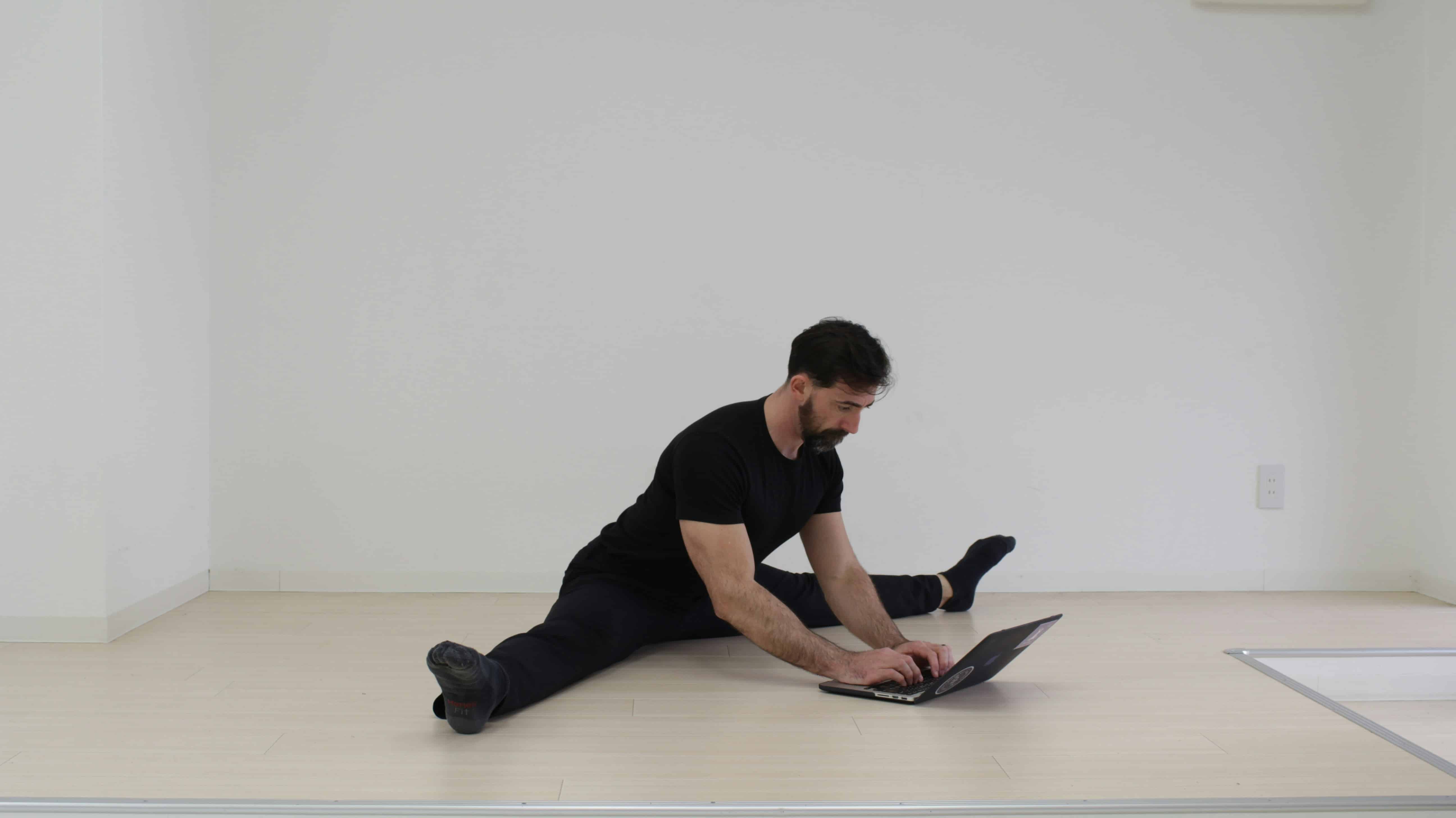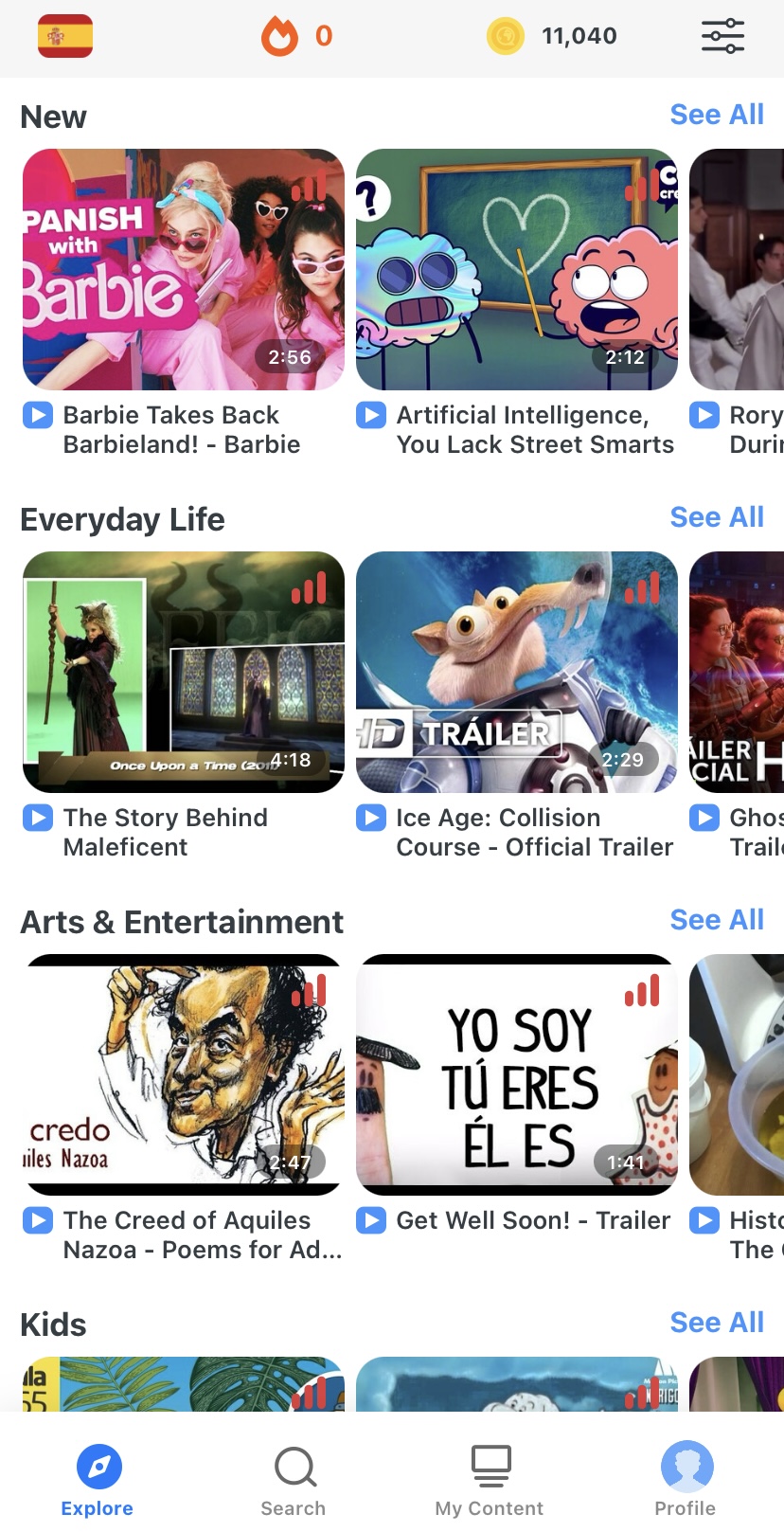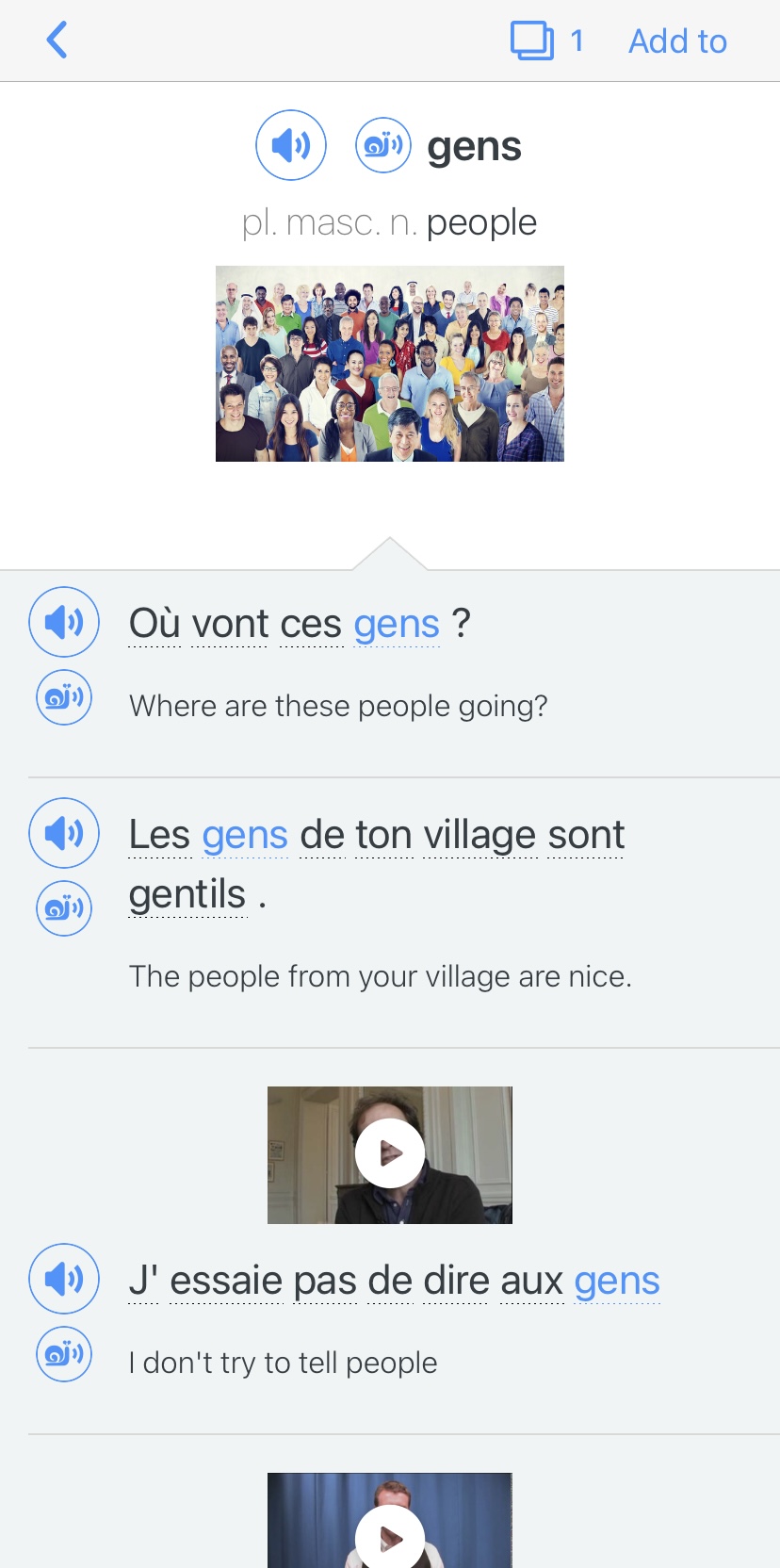Contents
- 1. Re-prioritize Your Schedule
- 2. Schedule Target-language-only Times
- 3. Study in Short Intervals Throughout the Day
- 4. Habit Stacking: Link Language Learning to an Existing Habit
- 5. Integrate Language Learning into Daily Tasks
- 6. Get a Page-a-day Calendar
- 7. Get a Text-only Language Exchange Partner
- 8. Narrate the World Around You
- 9. Get an Accountability Buddy
- 10. Keep a Learning Journal
- 11. Create a Study Basket
- 12. Study in Your Sleep
- And One More Thing...
How to Learn a Language When You’re Busy

I’m a pretty busy person. My days are packed with maintaining order in my family, house and work. Despite this, I’m fluent in two languages and intermediate level in two others.
I’ve read all the tips out there about how to make space in my day for language learning. Some worked, others were just not right for me. If you think you don’t have time to learn a new language, let me show you how to learn a language, even if you’re always busy.
Download: This blog post is available as a convenient and portable PDF that you can take anywhere. Click here to get a copy. (Download)
1. Re-prioritize Your Schedule
If you can’t find time in your schedule to study, then the program might be the schedule. Examine your schedule and figure out what can be improved. There are often ways to streamline and improve how you do the things you need to do in order to get to the things that you want to do.
My days have gotten much less hectic ever since I discovered the Eisenhower Matrix method of prioritizing. Split a piece of paper into four quadrants and fill them out according to this guide:
- Top-left: Important tasks that are also urgent or have a deadline coming up.
- Top-right: Important tasks that aren’t as urgent.
- Bottom-left: Unimportant but urgent tasks.
- Bottom-right: Unimportant and non-urgent tasks.
Now delete the entire bottom-right quadrant. No, really. If it’s not important or urgent, do you really need to do it? Move tasks around in the matrix until you feel comfortable removing that whole square.
Take a look at your unimportant but urgent tasks. These are tasks that need to get done—but maybe not by you. Can you delegate any of the tasks to someone else? Try to get rid of as many tasks as you can in this section.
Once you’ve moved things around a bit, you should end up with a clearer image of your schedule. I like to have a main matrix for the month and then break down my daily tasks. Ideally, you want language learning to be in the “important and urgent” or “important but not urgent” parts of your schedule, depending on the day.
2. Schedule Target-language-only Times
Many websites suggest changing your phone’s language or playing a game in your language. I tried this tip a while back by downloading a silly little game in Japanese. I was hoping that I could read a little every time I opened the app during my downtime.
The thing is, we can’t always be working and learning, and taking breaks is incredibly important. Using my breaks for language learning was depriving me of those much-needed mental breaks.
What I did, instead, was add times into my schedule where I was only allowed to read, listen to, watch and speak my target language. For one hour a week, I was only allowed to watch Japanese YouTubers, play Japanese games, watch anime without subtitles and even speak to my husband in Japanese (my husband, just to clarify, does not speak Japanese).
Scheduling time to interact with the language you’re learning ensures that the task doesn’t get overlooked. Placing it in your schedule makes it a core part of your day, as something to check off your to-do list.
How to Create Your Own Effective Language Study Plan | FluentU Language Blog
The best language study plans have five important aspects in common. Crafting a great language learning plan requires careful forethought and built-in progress checkers,…
3. Study in Short Intervals Throughout the Day
You might not have an hour a week to fit into your schedule. That might be why you’re here in the first place—you just don’t feel like you have the time to spare. I still recommend adding language learning to your schedule. But, instead of adding a large block of learning, add short study sequences into your daily routine.
Try fitting in half-hour chunks, or even quick 10-minute study intervals. If you do this six days a week, that’s the whole hour that you didn’t think you had! By breaking down your learning into smaller, manageable chunks, you can make significant progress without feeling overwhelmed.
Research shows that our brains retain information better when learning is spaced out rather than crammed into long, continuous sessions. This method uses something called the “spacing effect,” where repeated exposure to material over time leads to better long-term memorization of what you learn. So when you study in short bursts throughout your day, you’re making the most of your available time but you’re also improving your ability to remember what you learn.
Many learning programs take advantage of this bite-sized learning schedule. My personal favorite to use is FluentU—in just a few minutes, I get a vocabulary boost and exposure to authentic use of the languages I’m studying.
FluentU takes authentic videos—like music videos, movie trailers, news and inspiring talks—and turns them into personalized language learning lessons.
You can try FluentU for free for 2 weeks. Check out the website or download the iOS app or Android app.
P.S. Click here to take advantage of our current sale! (Expires at the end of this month.)

4. Habit Stacking: Link Language Learning to an Existing Habit
The average person drinks about half a gallon of water a day. If you think about it, drinking this much water daily is a significant commitment. But you never hear anyone say “I’d like to drink water every day, but I’m just too busy!” or “My schedule is packed–I think I’m going to have to skip my water today.” Drinking water is an automatic habit, one that you do without even having to think about it.
Creating a new habit is difficult: It takes an average of 66 days for a habit to become automatic. I don’t know about you, but I find it hard to stick to anything for a week, so the idea of doing something for a full two months is incredibly daunting.
Let me introduce you to the wonderful trick of habit stacking. This is exactly what it sounds like: You take the habit that you want to form (ie language learning) and you piggyback it over an existing habit (ie drinking water).
For example, I have an existing habit of journaling for a few minutes every morning. I’ve built this habit over a couple of years and it’s become automatic. When I decided to start learning kanji, I stacked kanji learning on journaling. Every morning, I would complete my morning’s journaling and immediately follow it up with a page of kanji writing practice. Since the two tasks were similar—both involve physical writing—they stacked nicely with each other.
To try this in your own studies, figure out your existing habits and routines. Then, stick study time right before or after the established habit. Here are some ideas for how stacking language study onto other, automatic habits:
- After you check your email, open a language learning program.
- After you read the local news, read the news in your target language.
- Before you open a social media app, study five minutes in a language app.
- After you pour a cup of coffee, say an affirmation or a phrase in your target language.
- Before you brush your teeth, review five vocabulary flashcards.
5. Integrate Language Learning into Daily Tasks
This tip goes hand-in-hand with the previous one. With habit stacking, you use an existing habit as a trigger to remind you to study. With multitasking, you’re instead integrating your language learning directly into your daily activities.
It’s worth noting that humans are very bad at cognitive multitasking. Specifically, we’re very bad at focusing on more than one task at a time and at switching between tasks. That said, you can still effectively combine language learning with mentally undemanding tasks. Some of my favorite times to integrate language learning into my daily tasks include:
- Folding laundry
- Sweeping and mopping
- Washing dishes
- Waiting for the coffee maker to finish
- Exercising
Basically, any task where your mind checks out can be used in conjunction with language learning. Combine these mindless tasks with audiobooks, podcasts and songs in your target language. You can also practice speaking out loud while you go about your day. If you have a willing language study buddy, they can test you on vocabulary and flashcards!
6. Get a Page-a-day Calendar
This was an idea that came from habit stacking and it was one of the most helpful ways to incorporate language learning into every day. I start my day by looking at a calendar, anyway. This calendar sits on my desk, so I see it all day, every day.
Page-a-day calendars make excellent daily learning tools and they’re available for many languages. A quick look through Amazon shows daily vocabulary desk calendars for Spanish, Japanese, French and many other languages.
I like to keep all the pages of my calendar and split them into two categories: “already known” and “need to learn.” Then, I can use the pages later as flashcards. You can also write on these pages, so you can use them to make notes, add more information and generally write whatever you need to make the most of your daily learning.
7. Get a Text-only Language Exchange Partner
Language exchange partners are fantastic resources for learning. If you can find a partner whose schedule and goals line up with you, it can become one of the most useful resources in your language learning.
If you already have a packed schedule, though, you might struggle to coordinate with a language partner. For busy learners like me, the better option is a text-only exchange partner. I’ve managed to keep a few language partners over Line, WhatsApp and even Discord. With a text-based exchange, there’s no specific time commitment. There’s no need to match up schedules and you can respond in your own time.
You don’t have to keep things written, either. Exchange voice notes and recorded messages, too, for that much-needed speaking and listening practice.
How to Find a Language Partner, In-person or Online | FluentU Language Blog
Wondering how to find a language partner to practice new language online or in-person? Here’s the ultimate guide to find a conversation partner. You’ll learn why it’s one…
8. Narrate the World Around You
Practice your new language by keeping a running narration of the world around you. Walking down the street? Try narrating the things happening around you. Waiting in line? Talk about the other people you see. You can even make up stories about them. (Maybe don’t do this out loud, though!)
This technique lets you actively test what you know in a realistic way. I like it because I can do it anytime, so I can fit it into my hectic schedule. Even on weeks when I don’t get much studying done, I know I can at least do this much.
It’s also a fantastic way to find knowledge gaps. As you narrate your life, you’ll find words or grammar concepts that you don’t know. I like to use a simple recording program on my phone and note anything I feel like I’m missing. When it’s time to study, I pull up my recordings and let them guide my learning.
9. Get an Accountability Buddy
I’ve already mentioned that my husband helped me study Japanese. He’s also a native Spanish speaker, so I practice my Spanish with him, as well. If you don’t have a spouse to help you study, you can involve your roommates, gaming buddies, friends or anyone else.
Your study buddy doesn’t have to know another language. They don’t even need to actually help you study. Their role is to make sure that you’re still studying! This kind of relationship works best when you’re helping them with something in exchange.
About once a week, you and your accountability buddy should check in on each other. See whether you’ve met your study goals for the week and set new goals for the upcoming week. Knowing that there’s someone who’ll be making sure you’ve done your work for the week will help encourage you to make the time to study.
10. Keep a Learning Journal
A learning journal helps to organize your thoughts and keeps your progress in one place. You can integrate your language practice into everyday organizational tasks by writing to-do lists and notes to yourself in your target language. You can use a language journal to keep a running record of what you study.
Alternatively, you can keep a diary in your new language, writing down your experiences and thoughts whenever you have a chance. If you’re feeling creative, you can even try maintaining a notebook of stories and poems.
If you like variety, you can go for a mixture of all of these! I like to keep two main journals, one for structured study and one for more creative and freestyle learning. Journaling is handy for busy learners because it’s so versatile. I can always find a little time to write, and I’m always making lists. Just by switching anything you write to your target language, you get to practice writing and reading.
https://www.fluentu.com/blog/learn/bullet-journal-language-learning/
11. Create a Study Basket
I’m a lifelong language learner, but I used to feel like I didn’t have enough time to study. At some point, I realized that I was spending a lot of time browsing YouTube when I could have been doing something more mentally productive with my time. But I just couldn’t get myself to break away from this bad habit.
I realized the solution was in accessibility. I gathered all my learning materials and put them in a basket under my desk. Now, whenever I find myself with some free time in my schedule, I reach into my study basket.
Making a study basket doesn’t have to be complicated. Here are some of the things that I keep in mine:
- A language journal
- Textbooks and workbooks
- Website printouts
- Vocabulary flashcards
- Children’s books, readers and other reading materials
- Sticky notes
- A dictionary and a phrasebook
- Scrap paper and pens
Notice that all these things aren’t digital—your phone is an excellent way to study but it’s also an excellent way to get distracted. You can use digital resources during other study times but when you reach for your study basket, make it a completely offline session.
12. Study in Your Sleep
Does it sometimes feel like there aren’t enough hours in the day to study? Then use the hours in the night, instead! Some research has shown that learning in your sleep is possible… to a certain point. It seems that you can’t learn anything new while you sleep, but you might be able to reinforce things you’ve studied in your waking hours.
There are many resources for sleep learning, including many hours-long videos. Search for your target language paired with “sleep learning” or “learn in your sleep” to find your favorites. Since you can’t learn anything new while you sleep, I recommend watching chunks of the video while you’re awake, and then playing it again when you sleep.
I honestly haven’t tried this learning method. However, my husband once played a game with a repetitive soundtrack while I slept, and when I woke up I had the music forever forged in my mind (I can still recall it today, years later). So there’s definitely some potential in this learning method!
Can You Really Learn a Language While Sleeping? Potentially! | FluentU Language Blog
Can you learn a language while sleeping? If you can, what’s the science behind it? Why should you even bother, and how do you learn a language while you’re sleeping? In…
Learning a new language isn’t easy, especially when you have a packed schedule. But with these tips and methods, you should be able to fit language learning into your life, even if you’re always busy!
And One More Thing...
If you're like me and love learning languages through real-world content, FluentU is a game-changer. With FluentU, you're not just memorizing words—you’re learning how native speakers actually use them.
With our newest feature, you can now bring FluentU’s interactive tools to any subtitled content on YouTube or Netflix—or even import YouTube videos directly into your FluentU account!
You’ll also get access to a huge variety of content in our curated video library, from movie trailers to news clips, music videos, and more. The best part? FluentU makes this native-language content accessible for learners of all levels.
While you watch, you can tap on any word in the interactive subtitles to see a definition, an image, audio, and useful example sentences. Want to practice new words later? Add them to your flashcards with one click. No more pausing to look up and write down new words!
And FluentU helps you actually remember what you learn with personalized quizzes, plenty of example sentences, and extra practice with the words you find difficult.
Ready to start learning in a more natural, immersive way? Try FluentU on your computer or tablet, or download the FluentU app from the App Store or Google Play. Click here to take advantage of our current sale! (Expires at the end of this month.)
















